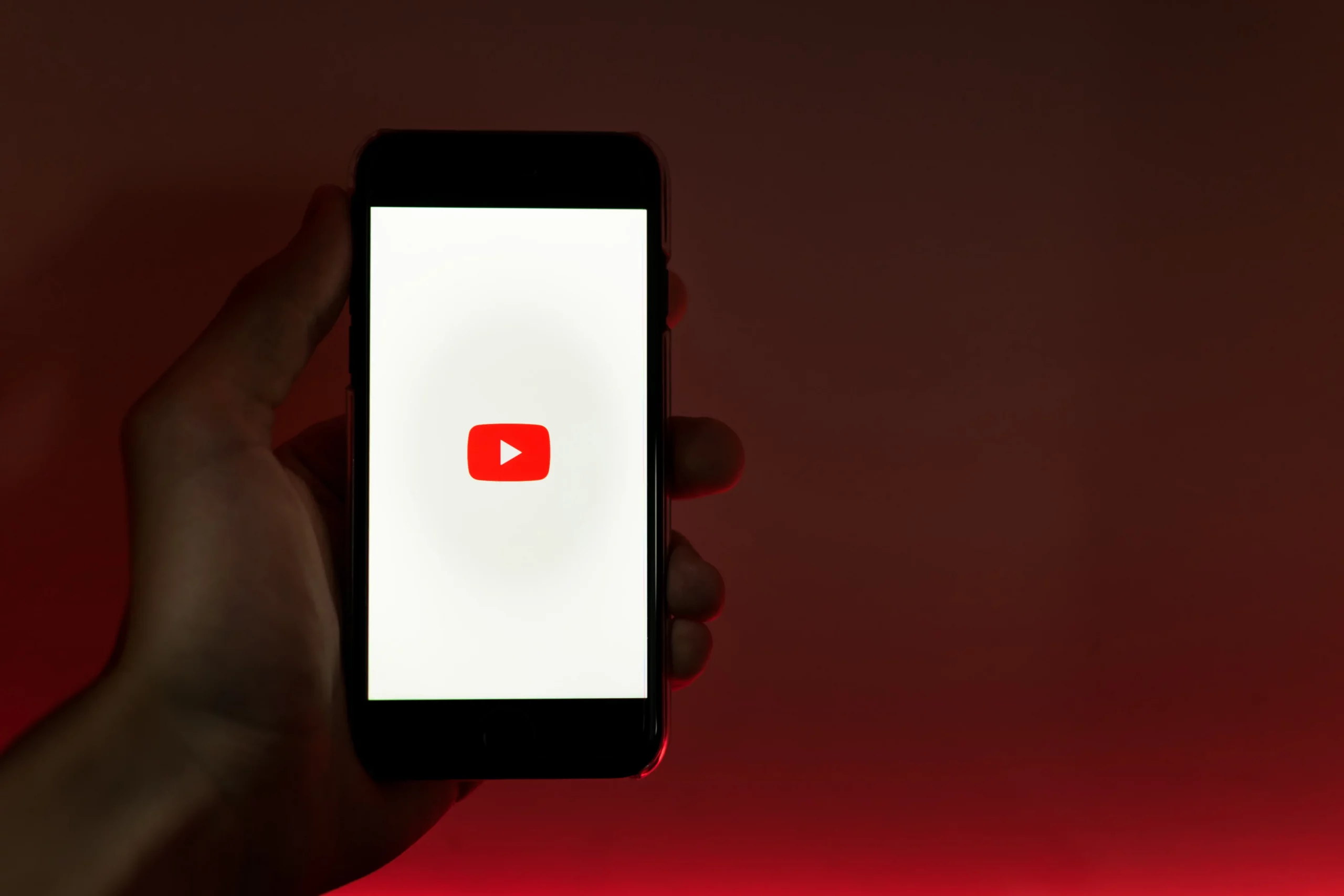
YouTube is the second largest search engine in the world. This platform combines the characteristics of a social media platform and a search engine. Here, users have the opportunity to subscribe to channels, comment on videos and discover new content thanks to the algorithm.
YouTube also serves as a one-stop shop to look for answers, whether it’s for explanations on specific topics or for practical guides. In addition, YouTube videos are often also displayed in Google’s search results, which further increases the reach of the content published there. So when users search for specific topics or content, YouTube videos can appear prominently in search results.
Important features of YouTube:
- Video platform (“social media platform”) from Google
- YouTube target groups are diverse and very broad. Marketing on YouTube means being present where your target audience is and delivering the type of content they expect.
- The recommended YouTube video length from an SEO point of view would be 3 – 5 min. The average length of the most popular YouTube videos is 4 minutes and 20 seconds.
- On YouTube, content is created through subscriptions and likes from other accounts. There’s something on every topic imaginable, from entertainment to advice.
YouTube algorithm
When evaluating the relevance of videos and other content, algorithms consider a variety of factors. This includes information about user behavior such as search queries, click behavior, playlists, likes, comments and subscriptions. This data serves as indicators of what users like and see as relevant.
Business relevant keywords for YouTube videos
The well-optimized YouTube videos can increase the overall traffic of a website. If you search for a term on Google, you will also see corresponding YouTube videos in SEPRs. A good, well thought-out keyword strategy could lead to YouTube SEO success.
A detailed keyword research should be carried out, as with a normal article creation. Keyword research can be done with various online tools (Google Trends, Google Ads Keyword Planner, Keywordtool, AnswerThePublic, Ahrefs or SISTRIX).
Here are the recommended steps:
- Conduct keyword research with Google Ads Keyword Planner and Google Trends. Keyword research can alternatively be done with Keywordtool, Ahrefs or SISTRIX
- FAQ with AnswerThePublic – Collect the important FAQs and check them by search volume
- Analyze Keyword Density and Search Term Density – Use Seobility’s free WDF*IDF tool or use LSI keywords with HARPA AI
- Check auto suggest
- SERPs Competitors Check – Have the LSI keywords lists created with HARPA AI from the top three competitors
- Set topic – identify structures and content
- Keyword prioritization
- Creation of video briefing with SEO specifications
Keyword prioritization is done after identifying relevant topics, SEPRs competitor check, keyword density analysis and keyword research. The important points when creating video briefings with SEO specifications are:
- Main keyword in the file names – This is taken into account by the YouTube algorithm and supports the algorithm in recognizing and correctly classifying the content. It should look similar to the search engine optimization of images.
- Video Title – Grab users’ attention
- Descriptive text with business-relevant and topic-oriented keywords
- Thumbnail – (The thumbnail preview that appears in search results) should already convey the tonality of the video.
- Tags that describe the content. YouTube offers the possibility to add SEO tags to videos. This allows the algorithm to know exactly where to place the video.
- Subtitles – It is not recommended to rely on YouTube’s auto-generated subtitles as the translations are often incorrect. From an SEO point of view, it would always be better to touch up manually. If that’s too much effort, it’s essential to check the YouTube subtitles for accuracy. If the video deals with several topics or sub-topics of a topic, an index with jump labels is very helpful.
- Content as timestamps – It is recommended to create the important topics of the video as timestamps.
- It is only considered a view on YouTube from a watch time of 30 seconds: the video must be watched for 30 seconds in order to generate a complete view. However, it is not necessary to watch the video for 30 seconds at a time. On YouTube, not only the number of views, but above all the playback time (“Watch Time”) is decisive for the ranking.
What does perfect video optimization on YouTube look like?
- Title length: Title should be a maximum of 100 characters Next to the preview image (thumbnail), the title is the first thing users see. Optical markers such as brackets like [] and () or | can generate additional attention.
- Placement of the main keyword in the title: The main keyword should be placed as prominently and early in the title as possible. Important: do not use keyword stuffing.
- Length of the description text: The description text offers a volume of 5,000 characters, whereby 100 to 120 characters are displayed in the directly visible area (“above the fold”).
- Links in the descriptive text: It is recommended that the links in all video descriptive texts should only be used on your own channels, e.g. B. News, blogs, newsletters and website articles.
- Social Media Links: Social media channels (Facebook, Twitter, Instagram, TikTok and Pinterest) should be linked in the social bar so that viewers can easily access them.
- Placement of the main keyword in the description: The main keyword should be included in the description as early as possible and in a natural way. The beginning should be designed in an appealing and “catchy” way and definitely include the most important keyword. Anything beyond that is ideal for embedding long-tail or secondary keywords.
- Tags: There should be a good mix of generic and specific keywords here, including brand tags. The first tag should correspond to the main keyword. Then come the tags that perfectly describe the topic of the video (synonyms and variants of the main keyword) and also the related LSI (Latent Semantic Indexing) keywords. Too many tags should be avoided and around ten to twelve are recommended. With the right YouTube tags, the chances of being displayed in the sidebar under the topic-related videos improve.
- Hashtags: A maximum of 3 hashtags (business-relevant keywords) are to be used in the description text in order to be able to improve the video ranking.
- Thumbnail: Thumbnail or preview image in YouTube search results – Always uses only high-resolution images. The format should be 16:9 and the resolution should be 540 × 360 pixels; Arouse the interest of the user with the selected image – Important: do not make any false promises; Mentions the main idea of the video; Each video should have a unique thumbnail, e.g. B. Make each thumbnail unique with Photoshop.

YouTube SEO strategy
To ensure that viewers don’t switch off and watch the YouTube video to the end, there are some proven SEO strategies that can be used in the first 15 seconds:
- Captivating beginning: Start the video with an interesting and captivating scene or visual element. An unusual event, an exciting question or a surprising statement can arouse interest.
- Concise preview: Give a brief insight into the content of the video without spoiling the heart of the matter. Show users what to expect without giving away too many details. This creates curiosity and motivates them to watch the entire video to learn more.
- Quality Production: Pay attention to the visual and audiovisual quality of the video. It is recommended to have the professional shooting techniques, good light and clear sound. A high-quality video inspires trust and shows users that it’s worth sticking around to the end. Better to focus on quality than quantity.
- Emotional Connection: Creating an emotional connection that engages users and grabs their attention. Emotions can arouse interest and motivate users.
- Short and concise information: In the first 15 seconds, present relevant information that piques the viewer’s interest but does not get the gist of the matter.
- Freshness on YouTube: It is also important to regularly produce new content and upload it at regular intervals in order to achieve better visibility. Commitment can only be influenced indirectly. Certain behaviors, such as regular new content and addressing your community directly, usually have a positive effect.
- Community interactions on YouTube: Many likes, comments and interaction with the community through call-to-action or links to the subscribe button can also improve ranking and watch time. The subscriptions are very important. This is one of the factors that the YouTube algorithm uses to rank the videos in the search results.
Summary
Youtube SEO should not be neglected and any off-page optimization can generate additional traffic. A video analysis would be highly recommended to better assess video views.
If you pay attention to clever wording, interact with the community and use target group-oriented thumbnails, you can also get involved in the top ranking places with a small budget.
https://no-black-box-seo.de/en/blog/offpage-seo/youtube-seo/




